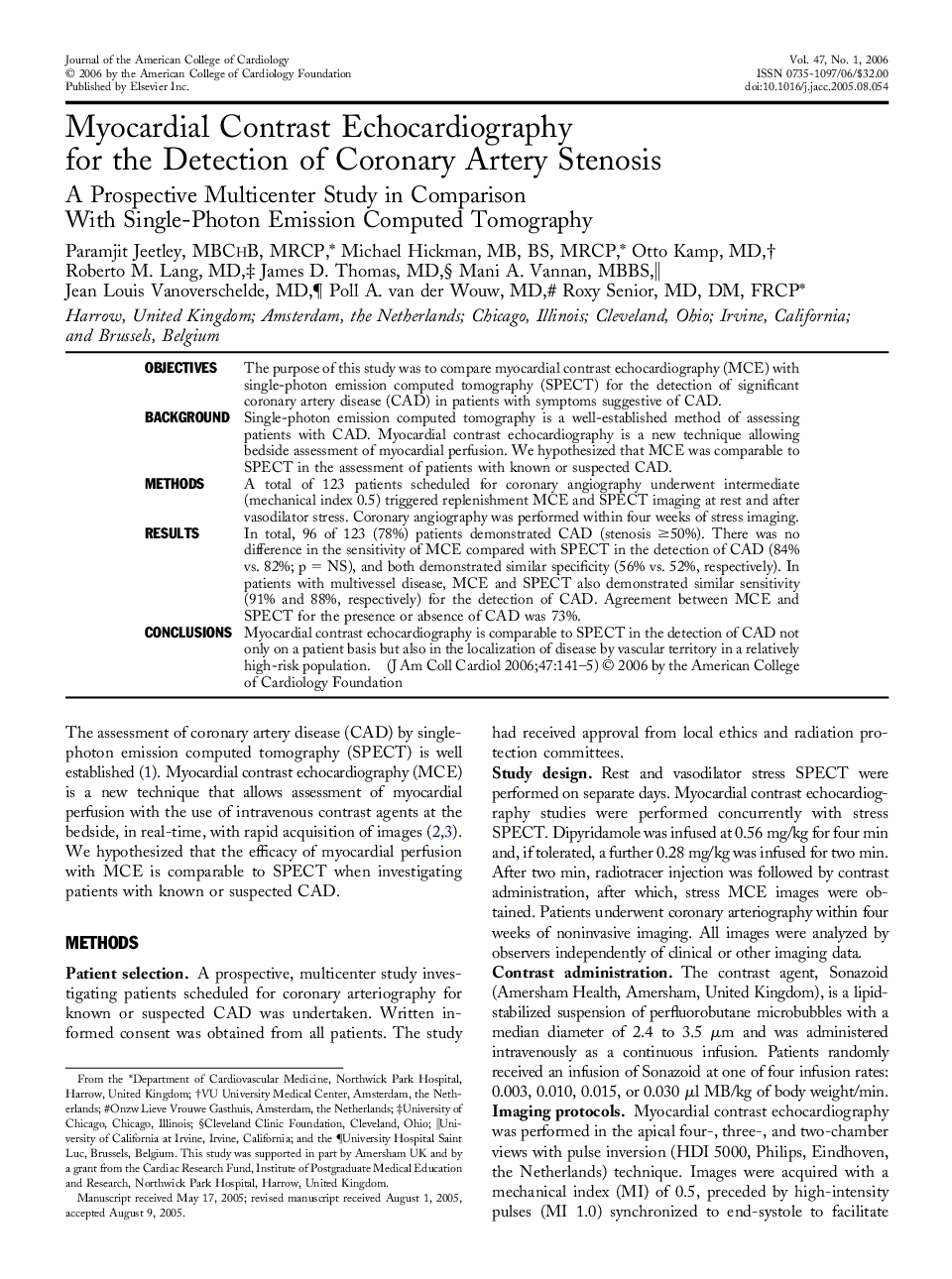| Article ID | Journal | Published Year | Pages | File Type |
|---|---|---|---|---|
| 2952562 | Journal of the American College of Cardiology | 2006 | 5 Pages |
ObjectivesThe purpose of this study was to compare myocardial contrast echocardiography (MCE) with single-photon emission computed tomography (SPECT) for the detection of significant coronary artery disease (CAD) in patients with symptoms suggestive of CAD.BackgroundSingle-photon emission computed tomography is a well-established method of assessing patients with CAD. Myocardial contrast echocardiography is a new technique allowing bedside assessment of myocardial perfusion. We hypothesized that MCE was comparable to SPECT in the assessment of patients with known or suspected CAD.MethodsA total of 123 patients scheduled for coronary angiography underwent intermediate (mechanical index 0.5) triggered replenishment MCE and SPECT imaging at rest and after vasodilator stress. Coronary angiography was performed within four weeks of stress imaging.ResultsIn total, 96 of 123 (78%) patients demonstrated CAD (stenosis ≥50%). There was no difference in the sensitivity of MCE compared with SPECT in the detection of CAD (84% vs. 82%; p = NS), and both demonstrated similar specificity (56% vs. 52%, respectively). In patients with multivessel disease, MCE and SPECT also demonstrated similar sensitivity (91% and 88%, respectively) for the detection of CAD. Agreement between MCE and SPECT for the presence or absence of CAD was 73%.ConclusionsMyocardial contrast echocardiography is comparable to SPECT in the detection of CAD not only on a patient basis but also in the localization of disease by vascular territory in a relatively high-risk population.
